|
BULB LOG 36 --- 3rd September 08

Virus
Do not panic there is nothing wrong with your computer. This is a picture of yet another of the computer related problems that we are experiencing at the moment. As if it was not bad enough that our main PC crashed and I could not get it going, the Forum had a problem and was off line for a number of days before Fred Carrie could get it sorted out and Fred also had a problem getting last weeks Bulb Log and the Wisley Log up loaded. Fred is very good at sorting all these computer related things but he needed the server support team to give him access to the online data base and they only work Monday to Friday office-type hours!! The good news is that Fred has now got everything working on the web site and we got our main PC back last Friday and it was working perfectly - until about 7.30pm that is when the same problem recurred so it is now back in the repair shop. As we were both suffering from the lack of internet access and especially our Forum fix I relented and logged my laptop onto the internet. Last nig
ht at 9.45pm there was a loud scream from Maggi and blow me the lap top had crashed. This time I was able to sort it out and discovered that we had been attacked by spy ware virus; after an hour of downloading and tweaking that seems to be resolved now. The moral to this story is always keep your internet security at maximium settings and back up all your valuable files. I have all my pictures and all my files backed up on three other stand alone hard drives so I am never in a panic that we will lose everything.
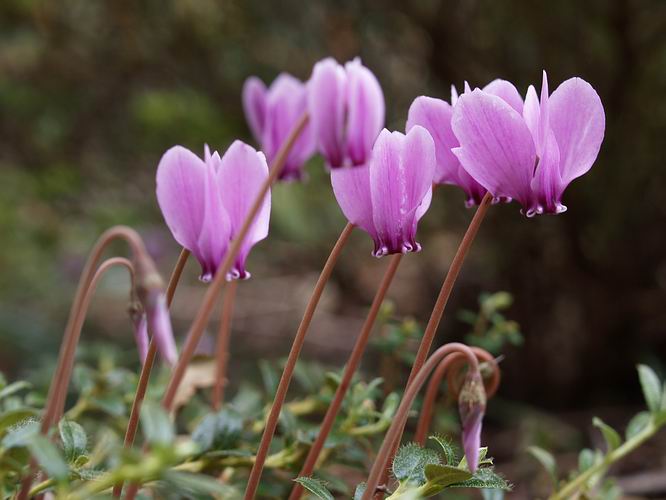
Cyclamen hederifolium and rhododendron
Having raised your blood pressure with the first picture let me now calm you down with some pictures of some of the flowering bulbs. This is a Cyclamen hederifolium flowering through a dwarf rhododendron - just the sight of it calms me down and makes me forget our computer problems.
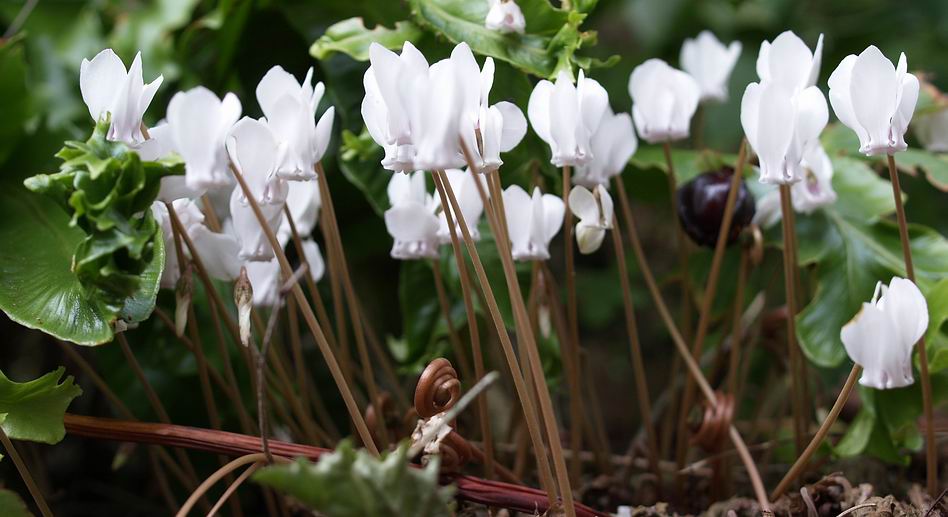
Cyclamen hederifolium album
Around the garden we have a number of good sized plants of Cyclamen hederifolium album and this one is flowering in a bed with Trillium and other spring bulbs - you can just see a Trillium seed pod in the background.
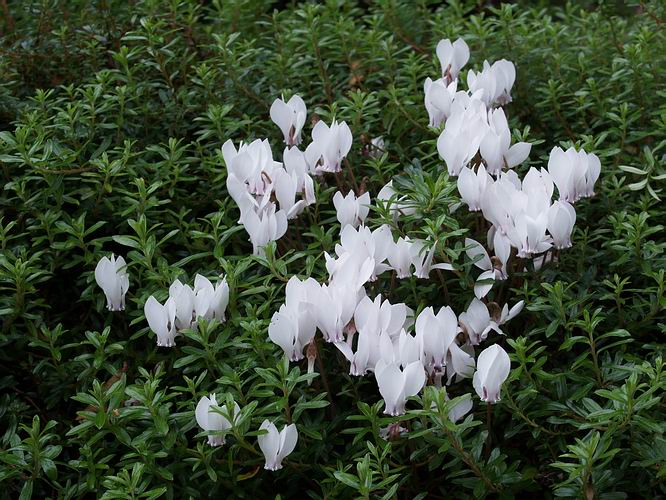
Cyclamen hederifolium and salix
Another white Cyclamen hederifolium is growing through a dwarf Salix half way down a drystane wall.
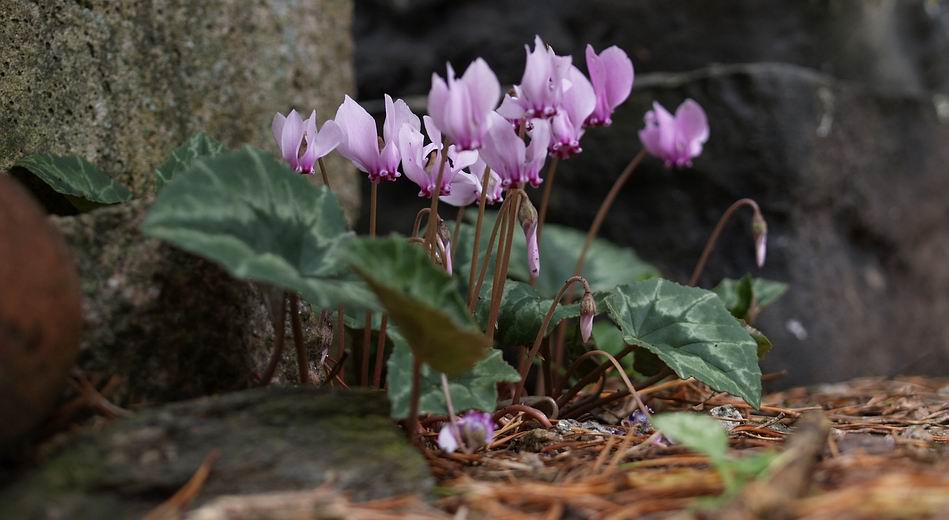
Cyclamen hederifolium
A nice form of Cyclamen hederifolium that we have kept going from seed since we got a pinch thirty years ago from the old lady who used to live across the road.
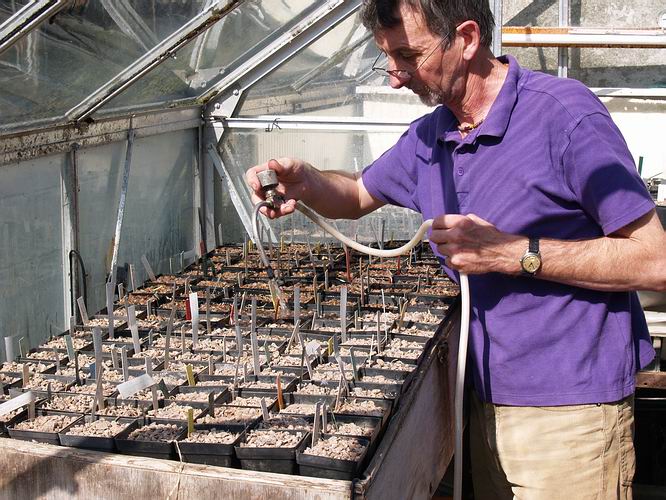
September first storm
Now to the real task - it is the first of September and as I showed you last week many of the bulbs are already pushing out roots in search of moisture. I have often speculated about what the exact trigger that spurs them into this action is - I am convinced that it is temperature drop perhaps the increasing differential between day and night temperatures. It is important to give all the pots a very good soaking to ensure that the compost is soaked all the way through to the centre and not just down the sides of the pot.
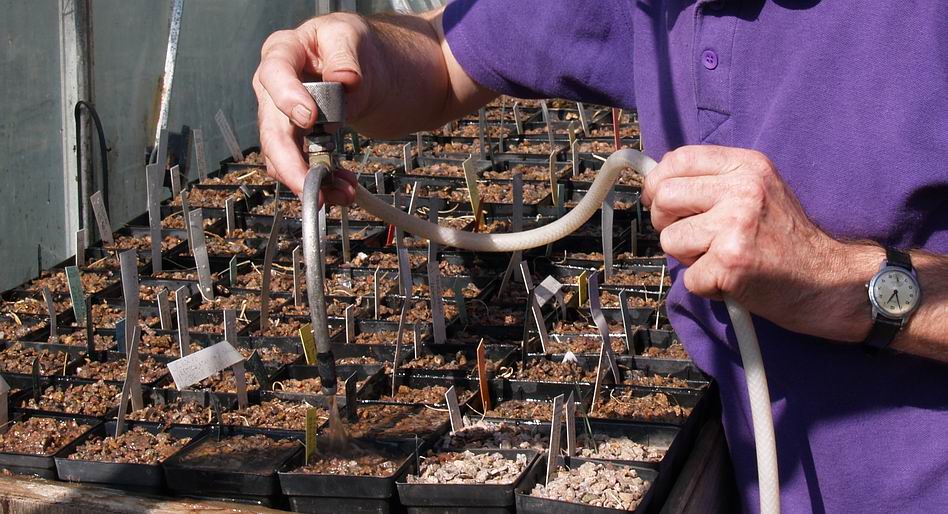
Watering control
My favourite device to control the watering for the bulbs is a valve I salvaged from some old hydraulic equipment to which I have added a right angled tube to so I can direct the water onto the gravel dressing. This control is especially useful when the bulbs are in leaf during the winter because I can water the pots without getting the leaves wet and that helps minimise many of the fungal attacks that bulbs are subject to.

Pots in plunge
One of the fine details which can make a big difference to how a pot of bulbs will grow is making sure that it is level as possible - notice the second red labelled pot from the bottom is sitting at a slight angle.
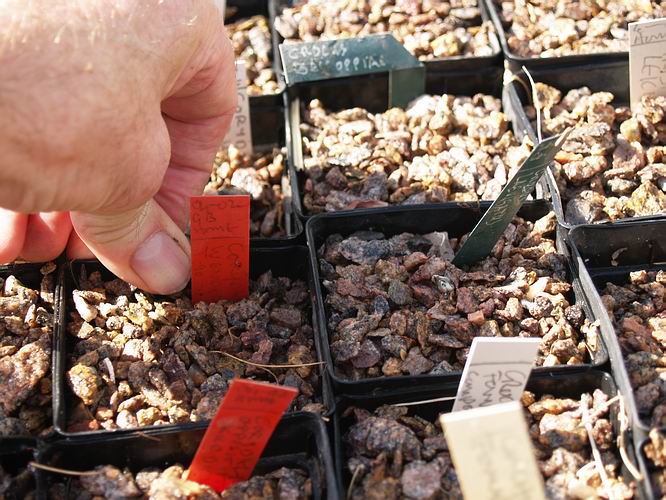
Level pots in plunge
If it was left like this the lower side would always receive more water and this can lead to uneven flowering as well as affecting the bulb growth. We are always hearing about the various micro-climates that we can have in our garden and it never ceases to amaze me how you can also get that same effect even in small 7cm pots like these.

Flood pots
I go round all the pots giving them a really good flood then when I reach the end I immediately start again and give them another flood.
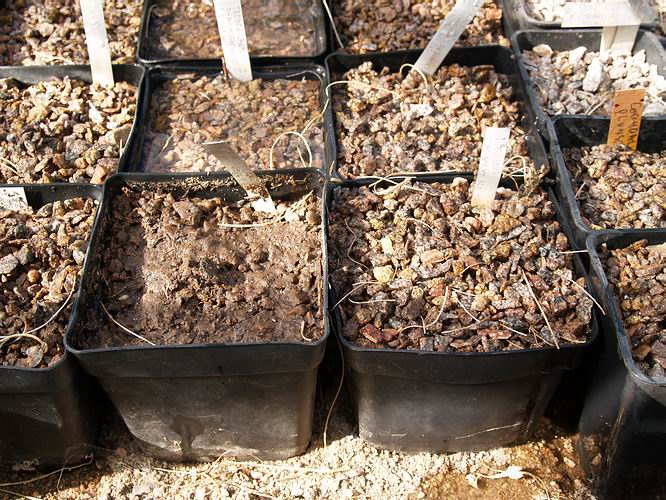
Pot without gravel
I have left one of these pots without the gravel top dressing to show what effect the gravel has. Without the gravel the flooding washes a lot of the fine material in the compost to the surface - this can lead to a crust forming and the water tends to run down the edges of the pot between the compost and the side.
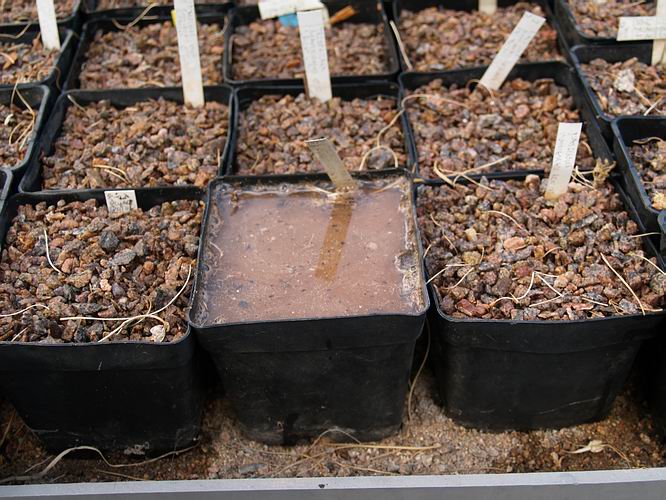
Pot slow to drain
You will notice this especially on the second time you flood the pot - the water is much slower to drain away. There is also another factor with these pots and that is the one without the gravel is also one of the ones that has been re-potted this year. It takes a number of good waterings before a drainage system is established in the dry compost of newly re-potted bulbs - even when the compost is full of grit. The pots that have not been disturbed this year have that drainage system already established even though they are just as dry. The surface tension of the water, the dryness of the compost and the fine material, seen washed to the surface of this pot, all contribute to this lack of drainage. I have plenty of grit in my compost mixture and after the third flood which I give about an hour after the first two all the pots should drain very quickly and at the same rate.
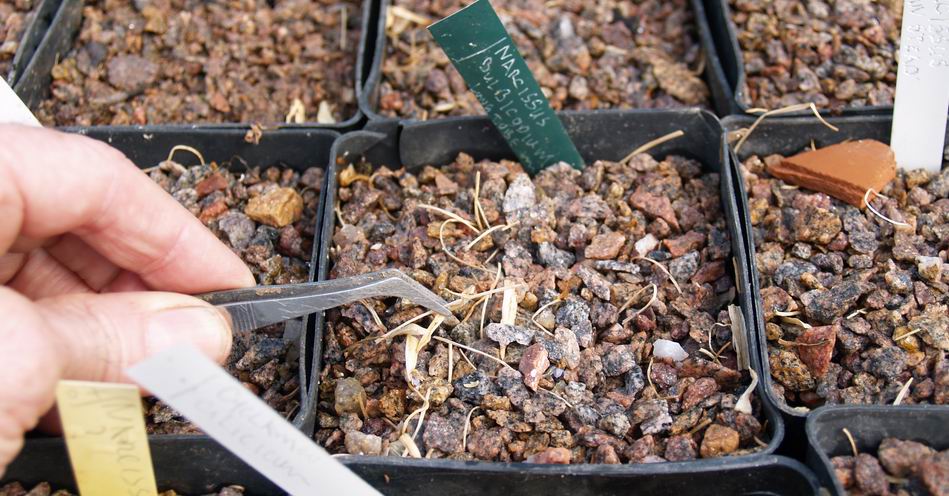
Remove old leaf remains
Because I have not re-potted a lot of the bulbs I have another task to work away at and that is removing all the leaf debris that is lying on the gravel before the new leaves appear. When these remains are dry they are springy and brittle so I find removing them easier to do after the flood as they absorb the water and become limp. The reason to tidy these remains away is to reduce the risk of fungal attacks transferring from these old remains on to the new emerging leaves. I have said in the past that here in the far north I apply the first storm at the beginning of September; in warmer parts where the season changes later you should adjust your timing accordingly maybe by up to a month later. Fritillarias are also later starters than the Crocus and Narcissus so I have not given the Frit House its storm yet but I have watered the pots of frits that are mixed with the other genera in the bulb house. The regime of autumn storms that I use is a middle of the road method that most bulbs will respond well to. Th
ere are always some bulbs that are best watered earlier or later and have more specific requirements, these you have to discover for yourself and adjust your regime accordingly.
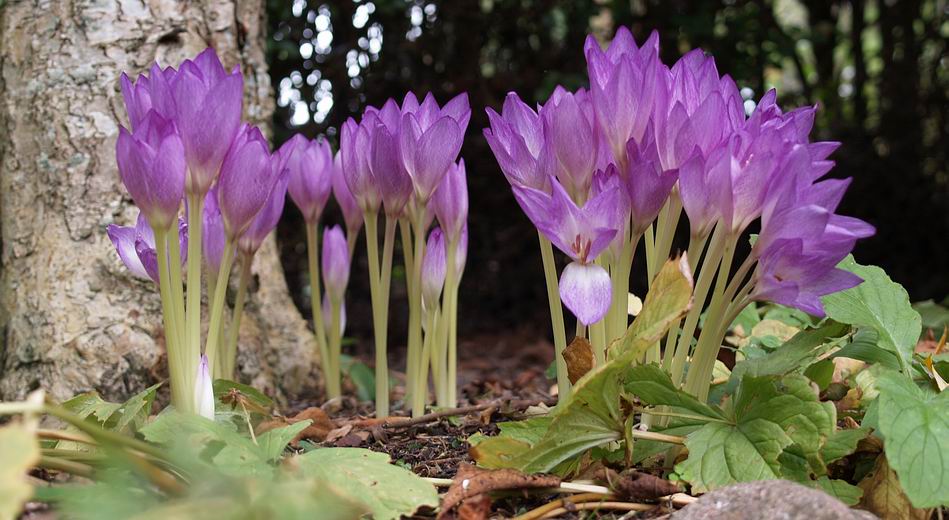
Colchicum tessellated hybrid
Back in the garden the various clumps of our Colchicum tessellated hybrid are always the first of our colchicums to flower.

Crocus vallicola flower centre
I will leave you this week with the beautiful sight of a Crocus vallicola flower revealing its centre on a nice sunny day . I am off now to try and sort out our main PC and hopefully by next week we will be back to normal.
^ back to the top ^
|

